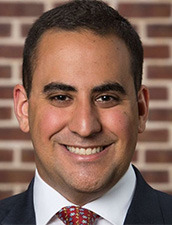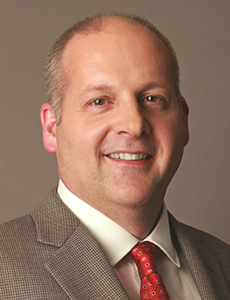The 2021 Environmental Power Brokers
The complete list of Power Broker® winners can be found here.
Finalists:

Allan Jackson, CPCU, ARM
Senior Vice President
Marsh, Atlanta

Steven Schwartz, CRIS
Vice President
Marsh, New York
The complete list of Power Broker® winners can be found here.
Finalists:

Allan Jackson, CPCU, ARM
Senior Vice President
Marsh, Atlanta

Steven Schwartz, CRIS
Vice President
Marsh, New York

In today’s increasingly complex business environment, companies operating in specialized sectors face unique risk challenges that generic insurance solutions often fail to address. From telecommunications networks vulnerable to cyber threats to medical technology manufacturers navigating product liability concerns, each industry requires tailored risk management strategies. This reality has prompted a shift in how insurance carriers approach risk control, with many now deploying specialists who bring deep industry knowledge to their client partnerships.
“Our goal is simple,” said Craig Collins, Head of Portfolio Quality Assessments and Risk Control, U.S. for Intact Insurance Specialty Solutions. “Get out there. Be seen. Build trust. And deliver the kind of service that makes brokers want to work with us again and again.”

Craig Collins, Head of Portfolio Quality Assessments and Risk Control, U.S., Intact Insurance Specialty Solutions
The modern economy demands insurance partners who understand the nuances of specialized industries. Telecommunications companies managing vast fleets and network infrastructure face different exposures than electronics manufacturers dealing with supply chain disruptions and product safety requirements. Medical technology firms navigate regulatory compliance while information technology companies grapple with evolving cyber threats.
This diversity of risk requires more than traditional insurance coverage. It demands consultative partnerships where risk control professionals understand not just the theory of risk management, but the practical realities of how businesses operate within their specific sectors. Companies need advisors who can identify vulnerabilities unique to their industry and recommend solutions that align with operational constraints.
The evolution of specialized risk control reflects this need. What once operated as separate, siloed units supporting individual industries has transformed into integrated teams that maintain deep expertise while sharing knowledge across sectors. This approach allows risk control professionals to address the increasingly interconnected nature of modern business risks, where a manufacturing company might also face significant cyber exposures or a technology firm might need fleet safety management.
When risk control professionals bring real-world experience from the industries they serve, the dynamic changes from inspection to partnership. These specialists arrive with credibility and fluency in technical areas, allowing them to quickly identify critical exposures and offer practical solutions.
Rather than delivering generic recommendations, industry-experienced consultants can prioritize interventions that will have the greatest impact on reducing claims. They understand which risks are inherent to the business model and which can be effectively mitigated without disrupting operations. This targeted approach helps companies make meaningful improvements without becoming overwhelmed by compliance requirements.
The benefits extend beyond individual client engagements. Risk control teams that collaborate globally can share insights on emerging threats and proven solutions. Cross-border knowledge sharing brings new tools, case studies, and real-world learnings into every client interaction. When a wildfire mitigation strategy proves effective in one region, or a cyber risk evaluation framework delivers results in another market, these insights can be adapted and applied across the portfolio.
For brokers, this specialized expertise translates into stronger renewal packages and improved client retention. When risk control professionals help clients make operational improvements that reduce future claims, it strengthens the entire insurance relationship. The value extends throughout the policy year, not just at the point of quote, creating ongoing touchpoints that reinforce the partnership.
The true measure of specialized risk control lies in its ability to transform challenging situations into success stories. Consider a large telecommunications company that faced mounting fleet losses, with claim frequency rising and severity spiking to the point where its future insurability was in question. The company risked losing access to the coverage its operations depended on.
Instead of non-renewing the client, Intact’s Risk Control team implemented a focused intervention plan. They collaborated with the client’s leadership team to identify root causes of loss activity, then developed a structured service plan to strengthen fleet management practices. This included creating standardized operating procedures for driver behavior monitoring and accident investigation, all supported by consistent follow-up and ongoing risk control engagement.
“This wasn’t a quick fix. It was a strategic, hands-on effort that delivered a measurable impact,” Collins explained. The situation stabilized, losses declined, and the client remained in the portfolio, stronger than before.
This case exemplifies how specialized risk control creates value for all stakeholders. The client avoided a potential business disruption, the broker retained an important account, and the carrier transformed a problematic risk into a sustainable partnership. The success stemmed from the risk control team’s ability to engage rather than investigate, positioning themselves as advisors who show up, stay involved, and help clients improve.
Similar transformations occur across various specialized sectors. Risk control consultants trained in multiple segments can support accounts with overlapping exposures, addressing everything from cyber risk evaluation and ergonomic program management to fire protection specification consultation and network security evaluations. This flexibility allows teams to meet regional demands without sacrificing expertise, ensuring that clients receive relevant, actionable guidance regardless of their industry or location.
As businesses continue to navigate evolving risks, the demand for specialized risk control expertise will only intensify. Companies that partner with carriers offering deep industry knowledge and consultative risk management services position themselves to not just survive challenges but to thrive despite them. The key lies in finding insurance partners who view risk control not as a compliance exercise but as a strategic tool for business improvement.
For organizations ready to leverage specialized risk control expertise, the benefits can include reduced claim frequency, improved operational efficiency, and stronger insurability over time. “The team’s evolution reflects that mindset,” Collins said. “By developing common frameworks across specialties, the team can flex to meet regional demands without losing expertise.”
To learn more, visit https://www.intactspecialty.com.
This article is provided for general informational purposes only and does not constitute and is not intended to take the place of legal or risk management advice. Readers should consult their own legal counsel or other representatives for any such advice. Intact hereby disclaims any and all liability arising out of the information contained herein.
Intact Insurance Specialty Solutions is a marketing brand for the insurance company subsidiaries of Intact Insurance Group USA LLC. Our solutions are backed by the financial strength of Atlantic Specialty Insurance Company, a subsidiary of Intact Financial Corporation (TSX:IFC), rated A.M. BEST A+ | FITCH AA | MOODY’S A1.
This article was produced by the R&I Brand Studio, a unit of the advertising department of Risk & Insurance, in collaboration with Intact Insurance Specialty Solutions. The editorial staff of Risk & Insurance had no role in its preparation.